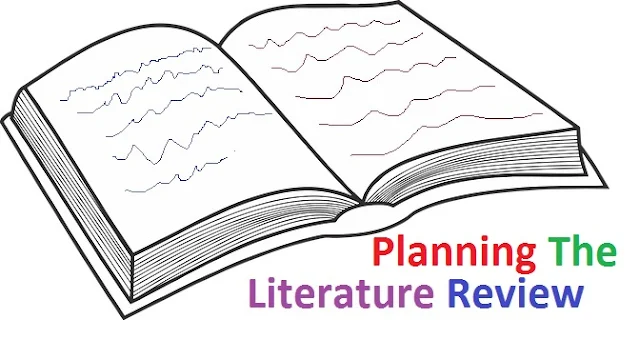Planning the Literature Review | How to plan a literature review?
Gathering and noting information from printed sources is often considered a simple task and taken for granted. But it is done poorly when it is not planned properly. The general steps in planning the literature review are described below:1. To decide what information is useful and what is not useful
This decision is not easy to make. The right approach is to identify the information needs of the research on hand. The researcher should draw up a preliminary outline of the topic with reference to the objectives of the study. Even though this outline will change as he gathers more information, it serves as a guide for making the above decision.
2. To determine how to record what is gathered from a published material
Should it be noted down verbatim, outlined, or paraphrased? New ideas viewpoints, findings of earlier studies, and arguments may be outlined in our own words. Important definitions or statements to be quoted may be recorded verbatim within inverted commas. In a few instances, a paraphrased statement of the author's position may be desirable.
3. To set up an orderly recording or note-taking system
Can bounded notebooks, loose sheets, or cards be used for recording notes taken from references consulted? In this decision, the researcher must be guided by the requirements of the goods recording system.
These requirements are:
Does the traditional method of recording information in a bounded notebook meet the above requirements? No. It does not facilitate ready reference, as one has to thumb every page, every time, resulting in an awful waste of time and energy. It does not provide for flexibility in organizing information. Further, all the information relating to a particular sub-title is not available in one place in the notebook. Thus the system of recording information in a bounded notebook does not satisfy any of the requirements of a good recording system.
Even the system of loose sheets is not very much suitable. Sheets will get mutilated when handling frequently. They also do not provide much flexibility in organizing the information. The most suitable method of recording notes is the card system. It meets all the requirements of a good recording system. They can be easily handled. They can be stored conveniently in inboxes. They promote maximum flexibility in arranging, re-arranging, grouping, and classifying information.
- The recording system should facilitate the ready location of the recorded information when required.
- It should allow for more flexible handling and organizing of information. That is, it should permit easy arrangement and rearrangement, which is a matter of great importance for the classification and analysis of information while drafting the report.
- All notes relating to a particular concept or aspect of a topic should be available together.
Does the traditional method of recording information in a bounded notebook meet the above requirements? No. It does not facilitate ready reference, as one has to thumb every page, every time, resulting in an awful waste of time and energy. It does not provide for flexibility in organizing information. Further, all the information relating to a particular sub-title is not available in one place in the notebook. Thus the system of recording information in a bounded notebook does not satisfy any of the requirements of a good recording system.
Even the system of loose sheets is not very much suitable. Sheets will get mutilated when handling frequently. They also do not provide much flexibility in organizing the information. The most suitable method of recording notes is the card system. It meets all the requirements of a good recording system. They can be easily handled. They can be stored conveniently in inboxes. They promote maximum flexibility in arranging, re-arranging, grouping, and classifying information.


0 Comments
If this article has helped you, please leave a comment.